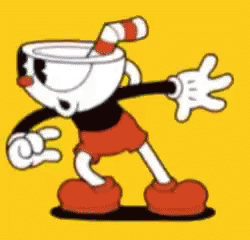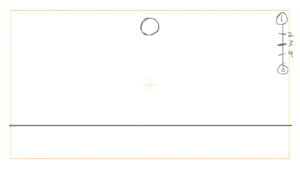
2D animation is one of the most well-known forms of animation and it has been around since the late 19th century or perhaps even earlier!
In simple terms, 2D animation is the art of creating movement in a flat, two-dimensional space. The animator sequences drawings with one second of time normally divided into 24 frames, which, when played together quickly give the illusion of movement.
Early attempts at 2D animation weren’t as fluid as they are now, so you could see the juddering between movements, but modern 2D animation is seamless.
It’s typically referred to as traditional animation because it has its roots in the early days of moving image production, though nowadays many animation studios use images created on a computer, otherwise known as CG.
Some animators still use traditional pen and paper methods though, like famed Japanese animators Studio Ghibli. For the majority of their animations, backgrounds are painted by hand and each frame of movement is painstakingly drawn by a team of artists.
One scene in particular from the award-winning movie Princess Mononoke famously took 2 years to complete because every slight movement had to be drawn meticulously.
To give you an example of scale, the production started in 1995 and took two years. In total there were 144,000 cels (individual drawings) in the entire movie – that’s a lot of animation work!
Nowadays, 2D animation is enjoying something of a revival, with many popular TV shows and computer games employing the style.
Examples of 2D Animation

One of the very first examples of 2D animation ever made was called Fantasmagorie. It’s a short cartoon made by Emile Cohl in 1908. It’s entirely in black and white, consisting of a simple stick man. You can view the video here.
Nowadays, with the recent surge of popularity for 2D animation, there are loads of examples of award-winning TV shows, games and movies that use 2D animation. Take Cuphead, for example, an independent computer game developed in a distinct early-Disney style where all in-game assets and animations are hand-drawn in a traditional way.
Another fan favourite and a great example of modern 2D animation for TV is Rick and Morty, the super popular sci-fi animation on Netflix. Although some elements of the production are made using computers, the animators still use some of the basic, early principles of traditional 2D animation.
So now we know a little more about 2D animation, let’s look at the tools animators use to get their creations on the screen.
What software do 2D Animators use?
Nowadays there’s a lot of software out there for 2D animators. Some of it can be used by hobbyists and multi-million dollar studios alike, and some of them are even free!
Toon Boom Harmony is a popular 2D animation software that’s great for TV, film or web animations. It’s used by some of the biggest cartoon studios in the world to create shows like The Simpsons, Rick and Morty and Bob’s Burgers.
Pencil 2D is another example of software for 2D animation. It’s back-end and front-end, which means you can use it to draw and plan your animations and also render them out once they’re complete. It’s based on the idea of traditional animation, so you can use ink, paint and pencils to make your 2D animations instead of CG.
OpenToonz is another 2D animation software that has been used by Studio Ghibli, who we previously mentioned. In fact, Princess Mononoke, the film with 144,000 cels, used the software OpenToonz.

Source: YouTube
2D Animation terms and phrases
If you’re confused by all the terminology, don’t be! Here are the most common terms and phrases used in 2D animation.
2D: This refers to two-dimensional space. In animation, this means it’s a flat image created in X and Y dimensions, like a cartoon character drawn on a flat piece of paper for example.
Cel: This is short for celluloid, a transparent sheet that can be painted on or used to trace drawings from one frame to the next. Because they’re see-through, animators are able to build up a stack of cels to see the movements of each frame.

Source: Deviantart
Bouncing ball: This is normally the beginning for every 2D animator. It’s a simple technique that helps budding animators understand the principles of movement, helping them learn about timing, space, squashing and stretching.
FPS: This stands for frames per second, and it’s the speed at which frames are played. Imagine a bunch of still images moving really quickly…that’s frames per second. The more frames per second, the smoother the moving image. FPS can be a little confusing depending on the country and location – so click here to read more about this complex subject.
Layers: This is the process of separating the background from the middle ground and the foreground, or the characters and other moving objects on the top. Animators will layer a scene in this way so that often the background stays the same but the characters and other objects in front can move. Layers can be an entire character or just a single thing on that character, like an eye or a mouth.
Mask: A mask, sometimes known as a matte, is something that is used to cover up a part of an image. If you had a cartoon character walking along and disappearing behind a lamppost, the mask would be created in that shape and placed above the character.
Render: Rendering is the process of putting the final pieces of the animation together and exporting it out from the computer in a particular format, either for broadcast or further editing work.
What does a 2D Animator do?
A 2D animator creates animated scenes in two dimensions. Sometimes they develop characters or animate movement, other times they might work exclusively on backgrounds or a particular element of the production, or simply sketch storyboards for everyone else to follow.
The monitor 2D animator will work with a range of software and tools, but above all, they will spend their time producing layouts and designs, following a script or a storyboard.
Most 2D animators will do everything at some point in their careers, as it gives them a complete perspective of how the 2D animation process works, though others can specialise in particular areas.
For example, if you’re really, really good at animating facial features, that might be your speciality, while others work on background/scenery painting.
The majority of animators will work in a team at some point, so they won’t usually have to complete an entire project by themselves. This is especially true the longer the animation is.

An example of a storyboard from Family Guy | Source: BMCC Openlab
What skills and qualifications do 2D Animators need?
The animation industry is fiercely competitive, so you’ll be at a real advantage if you have an education in animation, art or graphic design. This doesn’t necessarily have to be a degree, however, it could be a foundational animation course from college.
For example, one of BCE’s former students graduated from the 2D Animation course and set up their own studio, working with some big names in media, film and television.
The most important thing is that 2D animators have a handful of technical skills in their locker, so they can work on a range of different things.
You’ll need a blend of artistic and technical skills and it’s always a plus if you’ve worked with 2D animation software. Additionally, if you’ve made your own animations as part of a course, a showreel is a great way of getting your foot in the door.
Here are some of the other skills needed to be a 2D animator:
- Storytelling skills
- understanding of the 2D animation process
- Art or design background
- Calm under pressure
- Ability to focus on small details
- Good communication skills
How do you become a 2D Animator?
There is no right or wrong way to become a 2D animation artist. While some will find their way into the industry through college and/or university, others might just pursue their passion from home and build up their experience with small projects.
We recommend going the educational path, as it will set you up with all the industry knowledge you’ll need to succeed once you graduate, showing you how to use industry-standard software and helping you develop a portfolio at the same time.
If you’re interested in becoming a 2D animator, take a look at BCE’s 2D Animation course. We’re always here to help you explore options and find your path into the industry.




